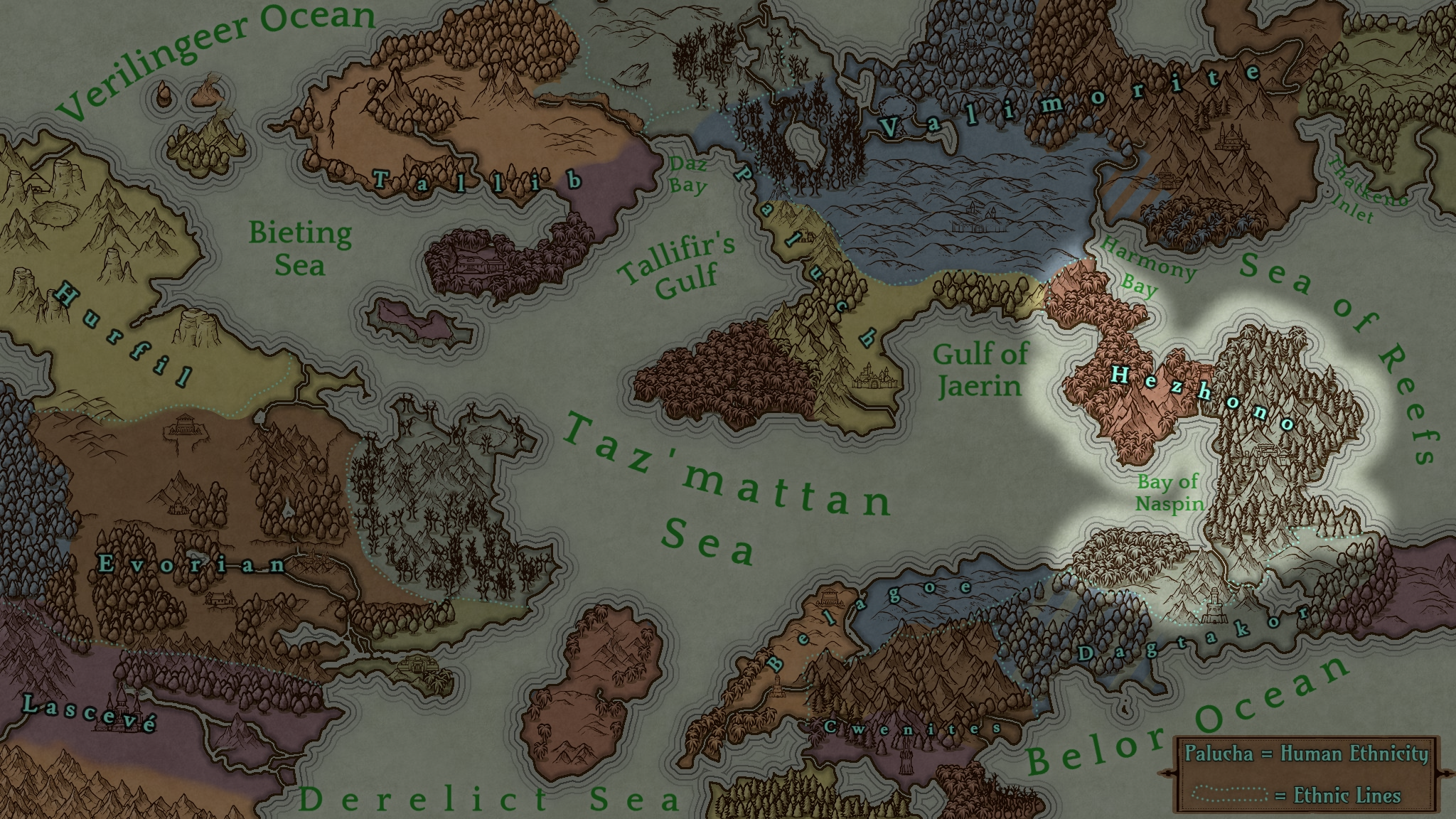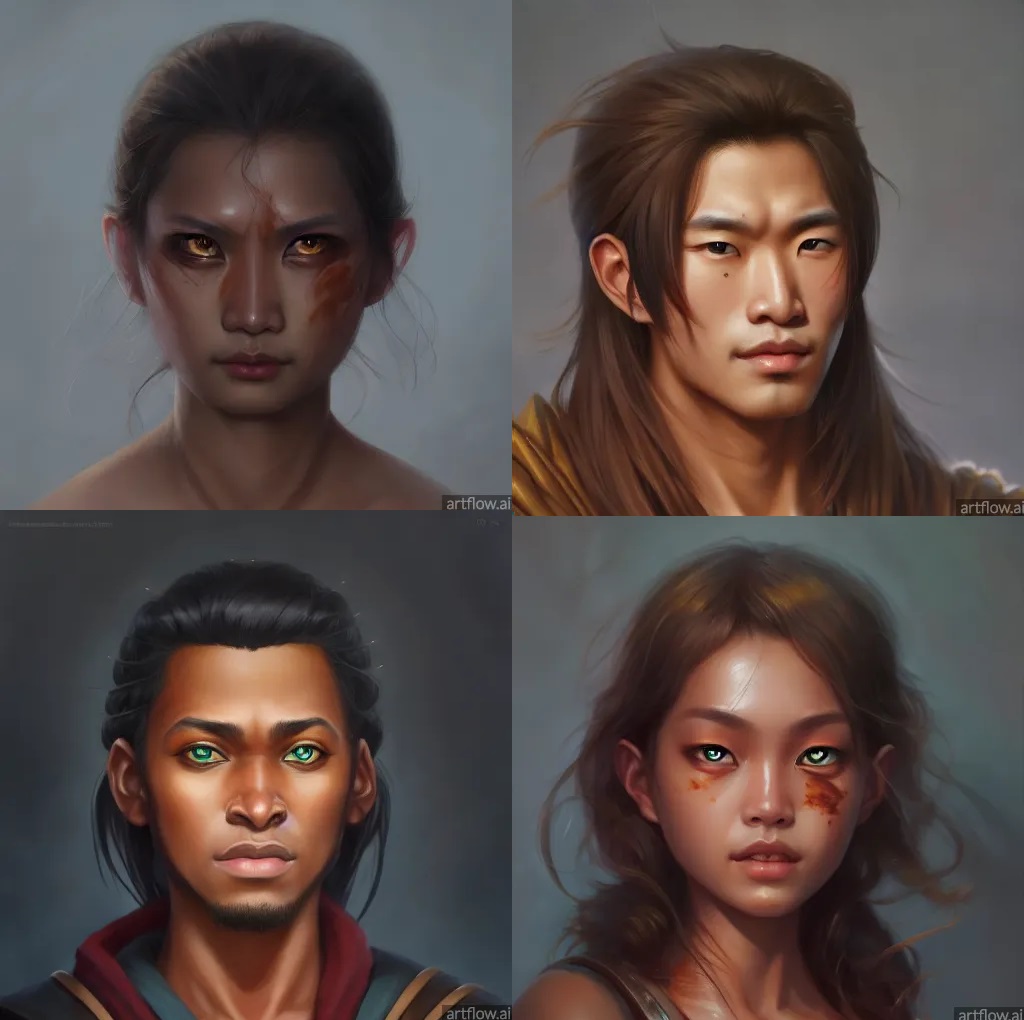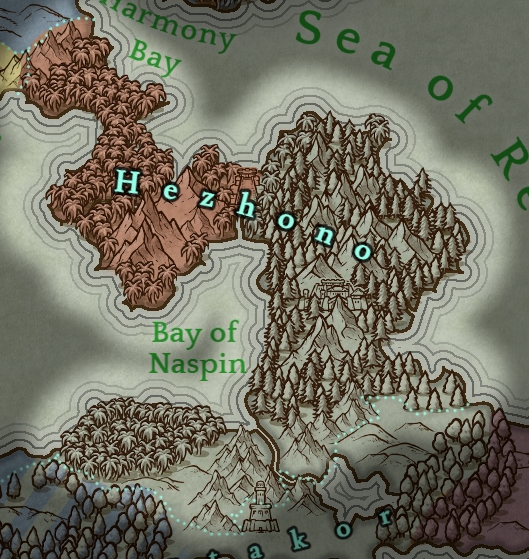Hezhono (hezzh-oh-no)

Humans that hail from the steamy jungles of Metzono and Hezhz. These peoples are divided into families and clans by the central mountains of Hezhz, the mountains of Metzono, and all the densely wooded hills. These people are tall, slim, amber-skinned with hazel or brown eyes, and, rarely, bright cyan or green. Their hair ranges from black to dark brown, but most nobility and family leaders shave their heads.
Show More Info
Religion
Pantheonic
The Hezhono are deeply devout to the Pantheon, but mostly devout to non-Evil deities. They take worship seriously and pray to almost all the deities when proper (Evil deities receive a short prayer). Many Good people take offense to the worship of deities like Gruumsh, Asmodeus, or Sharu-gaol. Wars and rebellions have flared up over this worship, and many perished.Hatred of Zehir
The frequent skirmishes and raids by the yuan-ti have caused the Hezhono to completely blacklist the worship of Zehir. Every family has had a child or sibling or parent captured by yuan-ti and sacrificed to Zehir.Couatl Reverence
Couatl are not worshiped as deities, but messengers and good omens. They are also called "dragonbirds" and portend events, usually good. Oracles use their skywrithings to prophesy events. The bones of couatl are rare and highly sought. Temples and churches use them as mediums during rituals and prayers to deities.Superstitions
Hellish Pools
The jungles of Metzono and Hezhz are vast, and dark, shaded hollows have formed from its tumultuous residents. Many believe that when water collects in lone, deep pools then gateways to the outer planes, in particularly the Evil planes, open. Indeed, many see devils and demons and abominations enter and exit the pool to sow discord and chaos on the nearby people. The pools have seemingly no bottom, an endless depth. When those brave enough drain the pool they find it as shallow as a puddle.Snake Handlers
Hatred of serpents wrought by the frequent conflict with the treacherous yuan-ti manifests in many ways. Some, though, take their hatred so far as to become almost piety. These are Snake Handlers and they gather in groups away from their towns and cities to handle serpents in dangerous rituals. Authorities have outlawed this practice but yet it remains a pervasive issue.Folklore
Hares, Rabbits, and Other Smaller Mammals
Metzono and Hezhz have prominent populations small furry creatures such as rabbits, hares, and pikas or hamsters. These critters exist despite the prevalence of hungry and powerful predators. These animals burrow, have incredible sprints, or use other means of protection. This has caused several myths and folktales involving such creatures.Culture
Quick Info here. Click the button under to see more information.
Hezhono Social Hierarchy
The relative information regarding hierarchy among the Hezhono people.
| Name | Members | Hair Length |
|---|---|---|
| Royalty | monarchy | Long hair past the middle of the back |
| Dignitary | judges > officials > doctors | Past shoulders |
| Assiduous | clergy/liturgy > warriors/soldiers > merchants > crafters | Just above shoulders |
| Labor | workers > peasants | Back of the head |
| Undesirable | beggars > criminals | Cropped or shaven |
Social Hierarchy
There are several classes based on birth and social status, but that can change for a number of reasons including wealth, feats, social standing, and royal decree. For example, extraordinary individuals and heroes may be elevated to a higher social stratum. Structure.The class structure is as follows from top to bottom and left to right (i.e. clergy are higher than merchants despite being on the same level):- Royalty. Monarchs
- Dignitary. Judges, officials, doctors
- Assiduous. Clergy/liturgy, warriors/soldiers, merchants, crafters
- Labor. Workers, peasants
- Undesirable. Beggars, criminals
Common Etiquette
Good social skills and behavior is widespread since the class structure is based upon social integrity. While not expected from those of lower classes, it is highly esteemed to be a good and helpful citizen.Dress Code
Hair
Hair style and length is divided into the social hierarchy, not gender. The longer the hair the higher the ranking. If hair begins to thin or balding occurs, loose turbans, scarves, or head coverings suffice.- Royalty. Long hair past the middle of the back
- Dignitary. Past shoulders
- Assiduous. Just above shoulders
- Labor. Back of the head
- Undesirable. Cropped or shaven
Naming Traditions
Surnames
es-father "son-of-father" for men, da-mother "daughter-of-mother" for women, or chi-parent "child-of-parent" for filé. The more references to heritage the higher class one is perceived to be. For example, someone named Allaiturahi-daughter-Kitur-daughter-Gina-daughter-Ara is perceived more affluent than Urarin-daughter-Urbi. Consequently, someone without a surname is seen as undesirable.Note about surnames
- Saying someone's given name if they are within your class or lower is not typically seen as crass, though some hardcore traditionalists disagree.
- The higher or lower on the hierarchy the more or less you should know their heritage. The higher the person, the more respect they command.
- Small towns and villages use one surname, two if they are speaking with an elder.
Nicknames
Names can be shortened to a single syllable with a -et (following consonants) or -t (following vowels). For example, feminine "Dara" becomes "Daret." "Gishiduk" becomes "Gishet." This is done with permission. Family or close friends are generally understood to be acceptable. Note: NEVER call an elder or someone who is higher standing a nickname, unless given absolute, express permission.Southern Metzono
Northern Metzono

Southern Hezhz
Northern Hezhz

Traditional Hezhono homelands
Encompassed species
Related Organizations



Comments